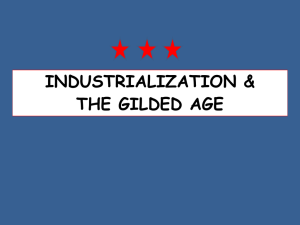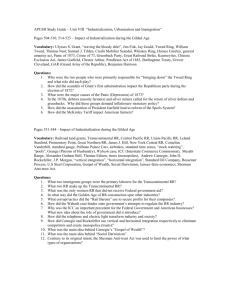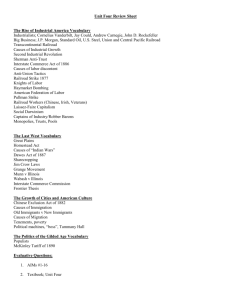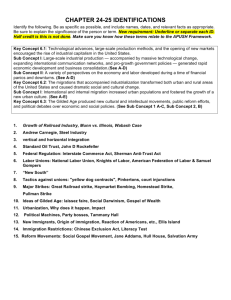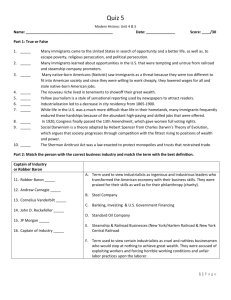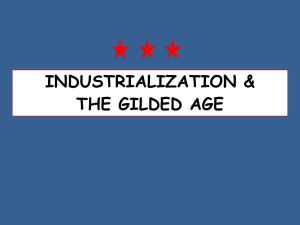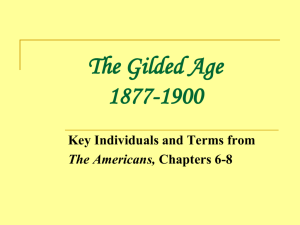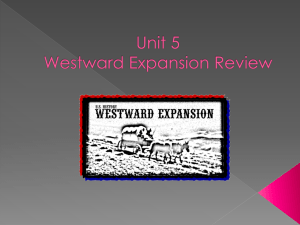File
advertisement
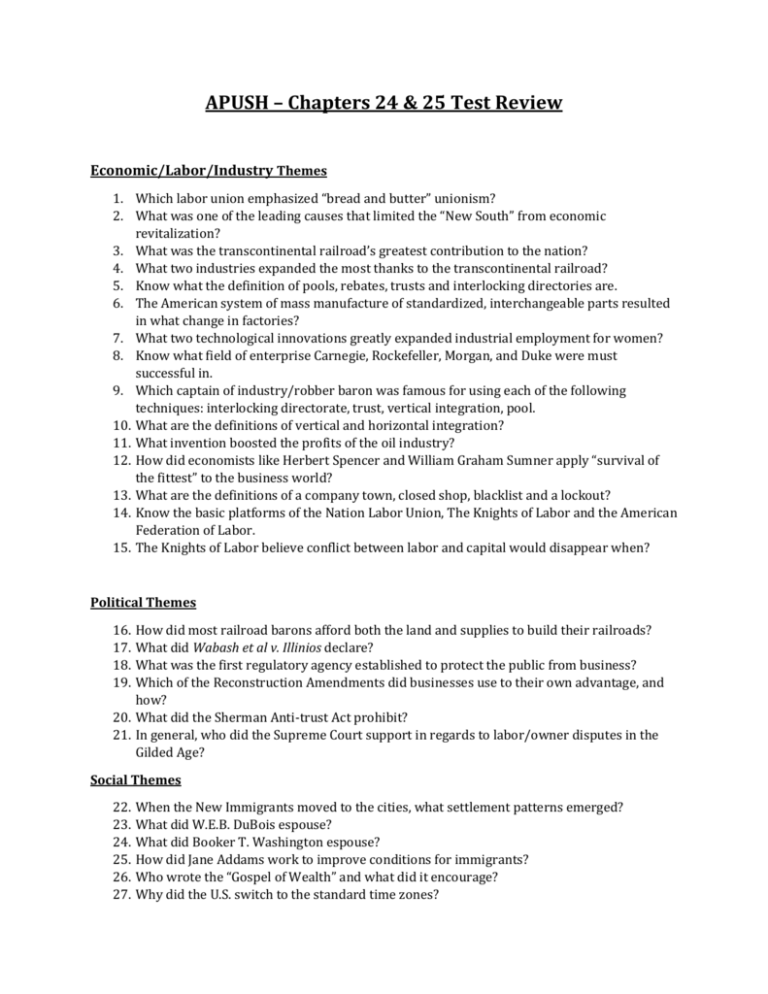
APUSH – Chapters 24 & 25 Test Review Economic/Labor/Industry Themes 1. Which labor union emphasized “bread and butter” unionism? 2. What was one of the leading causes that limited the “New South” from economic revitalization? 3. What was the transcontinental railroad’s greatest contribution to the nation? 4. What two industries expanded the most thanks to the transcontinental railroad? 5. Know what the definition of pools, rebates, trusts and interlocking directories are. 6. The American system of mass manufacture of standardized, interchangeable parts resulted in what change in factories? 7. What two technological innovations greatly expanded industrial employment for women? 8. Know what field of enterprise Carnegie, Rockefeller, Morgan, and Duke were must successful in. 9. Which captain of industry/robber baron was famous for using each of the following techniques: interlocking directorate, trust, vertical integration, pool. 10. What are the definitions of vertical and horizontal integration? 11. What invention boosted the profits of the oil industry? 12. How did economists like Herbert Spencer and William Graham Sumner apply “survival of the fittest” to the business world? 13. What are the definitions of a company town, closed shop, blacklist and a lockout? 14. Know the basic platforms of the Nation Labor Union, The Knights of Labor and the American Federation of Labor. 15. The Knights of Labor believe conflict between labor and capital would disappear when? Political Themes 16. 17. 18. 19. How did most railroad barons afford both the land and supplies to build their railroads? What did Wabash et al v. Illinios declare? What was the first regulatory agency established to protect the public from business? Which of the Reconstruction Amendments did businesses use to their own advantage, and how? 20. What did the Sherman Anti-trust Act prohibit? 21. In general, who did the Supreme Court support in regards to labor/owner disputes in the Gilded Age? Social Themes 22. 23. 24. 25. 26. 27. When the New Immigrants moved to the cities, what settlement patterns emerged? What did W.E.B. DuBois espouse? What did Booker T. Washington espouse? How did Jane Addams work to improve conditions for immigrants? Who wrote the “Gospel of Wealth” and what did it encourage? Why did the U.S. switch to the standard time zones? 28. What was one of the greatest challenges that industrialization brought about in the lives of workers? 29. Who did the “Gibson Girl” represent? 30. How did the development of the electric trolley change the layout of the cities? 31. What was a “bird of passage”? 32. Why were the New Immigrants regarded with such increased hostility as compared to earlier immigrants? 33. Why did many city dwellers like the big city political bosses and their machines? 34. How did Darwin and his new ideas affect American religion? 35. What activities did settlement houses provide? 36. Who were the American Protective Association? 37. What did the new research-oriented universities tend to focus on? 38. Who were the pragmatists and what did they believe in? 39. Who supported the idea of the “Talented Tenth?” 40. How did life expectancy change during the Gilded Age? 41. Who were the two big newspaper publishers during this time period? 42. How did the newspapers expand circulation and sales? 43. American novelists’ turn from romanticism and transcendentalism to rugged social realism was a reflection of what? 44. What argument did women’s suffrage advocates use to try and gain the vote?
